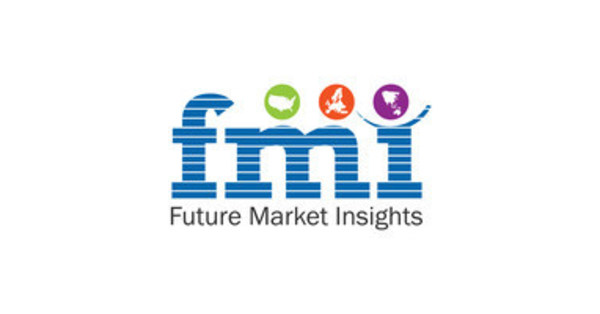Nylon-6 Industry Size, Share & Demand
The global nylon-6 industry share is expected to secure around USD 26,040.9 Million in 2032 and is likely to hold a valuation of around USD 14,679 Million in 2022. The global industry size is expected to exhibit a stable CAGR of 5.9% over the projection period from 2022 to 2032.
The growth in the market is attributed to the surging concern about the environment as well as the demand for nylon-6 in the emerging textile market, which will make nylon-6 a more attractive product in the market. The inclusion of PA 6 and PA 6, 6 into 3D printing systems is expected to lead to market growth for nylon-6 in the market.
From 2016-2021, the market displayed a growth rate of 5.1%.
As a result of its high pressure, heat, and corrosion resistance, it is highly regarded in the manufacturing industry. In addition to its phenomenal properties, the nylon-6 polyamide is an engineered thermoplastic that comprises good flow properties, moldability, extrusion capability, chemical resistance, and morphological properties.
It has diverse applications that involve fused filament fabrication (FFF), and nylon 6 is considered a promising candidate in future markets. Nyon-6 is known for its characterization of physical and chemical properties that make it suitable for a wide range of applications.
Source:
https://www.prnewswire.com/news-releases/nylon-6-market-is-set-to-surpass-revenue-of-us-26-1-mn-is-estimated-to-reach-by-2032-end-at-a-steady-cagr--data-analysis-by-future-market-insights-inc-301663177.html
Approximately 60% of the global production of polyamides is composed of nylon 6.
Around 6.6 million metric tons of nylon-6 were globally produced in 2013. In a huge variety of applications, both nylon 6 and nylon 66 can be used interchangeably depending on the local availability and the applications that require them in a particular environment.
It becomes evident that nylon 66 and nylon 6 have different properties for industrial uses.
Key Takeaways in Nylon-6 Market
Nylon-6’s versatility and its diverse application in various sectors are the major driving factors within the global market. Nylon-6 is used in various end-use industries such as automotive, packaging, electronics & electrical, wires & cables, textiles, films & coating, and others. As a result, the market is expected to benefit from an increase in demand for applications in the above sectors.
Nylon 6 (PA-6) is anticipated to see a surge in demand attributed to its usage in the healthcare sector and musical instruments. In addition to that, the nylon-6 market growth continues to prosper over the assessment period through increased capital investments, higher productivity, and a growing product portfolio. Even though nylon-6 (PA6) is an ideal material due to its physical and chemical properties, some features may inhibit its use, like its tendency to shrink in molded sections.
The lightweight advantages of nylon 6 result in a significant reduction in fuel emissions along with improved fuel efficiency. Transportation has widely become dependent on plastics over recent years. Furthermore, films and coatings are also emerging as a major driver in the food industry where films and coatings are being used to produce flexible packaging with a longer shelf life, such as meat packaging. This sector is dominated by low-cost plastic packaging such as PP, PE, and PVC.
Attributing to its high dielectric resistance, nylon 6 is known to be the most preferred polyamide in applications subjected to thermal and mechanical stress. The potential uses of nylon 6 have increased due to the emergence of polymer technologies.
Nylon-6 Industry Size, Share & Demand
The global nylon-6 industry share is expected to secure around USD 26,040.9 Million in 2032 and is likely to hold a valuation of around USD 14,679 Million in 2022. The global industry size is expected to exhibit a stable CAGR of 5.9% over the projection period from 2022 to 2032.
The growth in the market is attributed to the surging concern about the environment as well as the demand for nylon-6 in the emerging textile market, which will make nylon-6 a more attractive product in the market. The inclusion of PA 6 and PA 6, 6 into 3D printing systems is expected to lead to market growth for nylon-6 in the market.
From 2016-2021, the market displayed a growth rate of 5.1%.
As a result of its high pressure, heat, and corrosion resistance, it is highly regarded in the manufacturing industry. In addition to its phenomenal properties, the nylon-6 polyamide is an engineered thermoplastic that comprises good flow properties, moldability, extrusion capability, chemical resistance, and morphological properties.
It has diverse applications that involve fused filament fabrication (FFF), and nylon 6 is considered a promising candidate in future markets. Nyon-6 is known for its characterization of physical and chemical properties that make it suitable for a wide range of applications.
Source: https://www.prnewswire.com/news-releases/nylon-6-market-is-set-to-surpass-revenue-of-us-26-1-mn-is-estimated-to-reach-by-2032-end-at-a-steady-cagr--data-analysis-by-future-market-insights-inc-301663177.html
Approximately 60% of the global production of polyamides is composed of nylon 6.
Around 6.6 million metric tons of nylon-6 were globally produced in 2013. In a huge variety of applications, both nylon 6 and nylon 66 can be used interchangeably depending on the local availability and the applications that require them in a particular environment.
It becomes evident that nylon 66 and nylon 6 have different properties for industrial uses.
Key Takeaways in Nylon-6 Market
Nylon-6’s versatility and its diverse application in various sectors are the major driving factors within the global market. Nylon-6 is used in various end-use industries such as automotive, packaging, electronics & electrical, wires & cables, textiles, films & coating, and others. As a result, the market is expected to benefit from an increase in demand for applications in the above sectors.
Nylon 6 (PA-6) is anticipated to see a surge in demand attributed to its usage in the healthcare sector and musical instruments. In addition to that, the nylon-6 market growth continues to prosper over the assessment period through increased capital investments, higher productivity, and a growing product portfolio. Even though nylon-6 (PA6) is an ideal material due to its physical and chemical properties, some features may inhibit its use, like its tendency to shrink in molded sections.
The lightweight advantages of nylon 6 result in a significant reduction in fuel emissions along with improved fuel efficiency. Transportation has widely become dependent on plastics over recent years. Furthermore, films and coatings are also emerging as a major driver in the food industry where films and coatings are being used to produce flexible packaging with a longer shelf life, such as meat packaging. This sector is dominated by low-cost plastic packaging such as PP, PE, and PVC.
Attributing to its high dielectric resistance, nylon 6 is known to be the most preferred polyamide in applications subjected to thermal and mechanical stress. The potential uses of nylon 6 have increased due to the emergence of polymer technologies.




